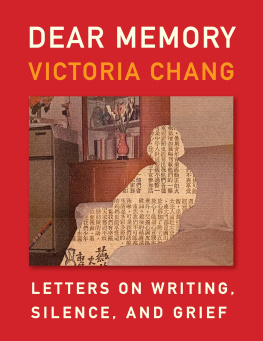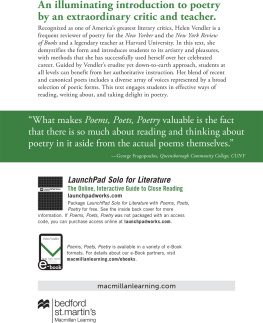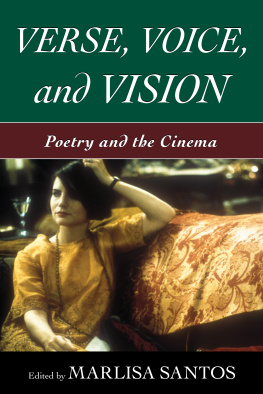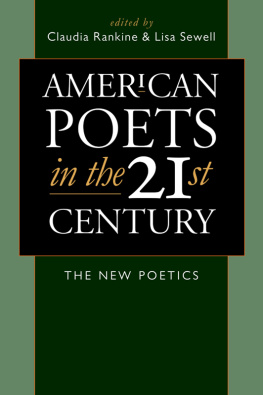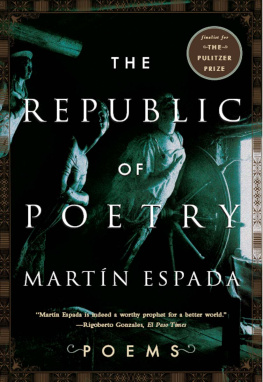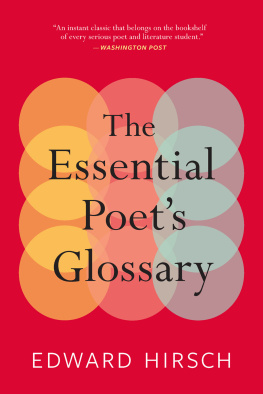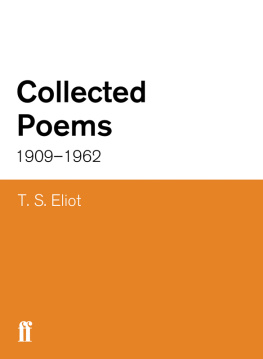
D EAR E DITOR

A H ISTORY OF P OETRY IN L ETTERS
The First Fifty Years, 19121962

E DITED AND C OMPILED BY
J OSEPH P ARISI AND S TEPHEN Y OUNG
Introductions and Commentary by Joseph Parisi
Foreword by Billy Collins

T O THE M EMORY OF H ARRIET M ONROE,
H ER S UCCESSORS, AND THE P OETRY S TAFF
19121962
Contents


Without the great generosity of the poets, heirs, and literary executors listed at the back, most of whom waived fees, this book would not have been possible. Stephen Young and I are especially grateful to the widows, children, and other relatives of the past Editors, who in several instances verified facts and gave us vital information unrecorded except in their memories. To Ann Monroe, Evalyn Katz Shapiro, Juliet Rago, Derek and Jon De Vries, Bonnie Larkin Nims, and Sophie Wilkins Shapiro, our heartfelt thanks. Bonnie Nims provided us with several letters from her personal collection, as did Nan Bright Sussmann, who also gave us the photograph of George Dillon as a young man.
Most of the Poetry archives are preserved and divided into two collections, at the Regenstein Library at the University of Chicago (19121960) and The Lilly Library at Indiana University (1961present), and include original manuscripts, letters, financial records, proofs, and other documentssome 300,000 items in all. Beginning in 1998, we examined the entire correspondence and many of the other files; almost all the letters we selected from Poetrys first fifty years were transcribed from the originals at Chicago.
Alice Schreyer, Curator of Special Collections, was unfailingly helpful, as were all the staff: Jay Satterfield, Daniel Meyer, Barbara Gilbert, Debra Levine, Benjamin Stone, and Jessica Westphal. They responded to our queries and several special requests with remarkable speed and good cheer, and we deeply appreciate their personal kindness on our many visits. The Lilly Library at Indiana University granted both of us Everett Helm Visiting Fellowships, which enabled us to make several trips to Bloomington to research the post-1960 files. To then Director Lisa Browar and to Curator Saundra Taylor, Rebecca Cape, Joel Silver, and the rest of the very gracious staff at the Lilly Library, our warm thanks. We should confess that on too many occasions in the course of searching the files we burst into laughter, groaned aloud, and shouted variations on Ahha! and Eureka! We appreciated the forbearance of the librarians, and apologize again to them and to the scholars who were offended by such unseemly violations of reading-room decorum.
In the Newberry Library, we also found several items, including unindexed correspondence and memoranda deposited by Poetry trustees of the forties and fifties, which shed new light on the financial and editorial crises at the magazine after World War II. We are indebted to our colleague Aaron Fagan, a former aide in Special Collections, who alerted us to this trove, and to Curator Diana Haskell, who allowed us to reproduce photographs and other rare documents from Poetrys early years conserved in the Newberry.
Additional letters, information, and leads on literary executors were provided by several other libraries and their staffs, including: Patricia Willis, Curator of American Literature, and archivist Timothy Young at the Beinecke Library, Yale University; David Koch, Curator of Special Collections at Southern Illinois University Library; Houghton Library, Harvard University; The Huntington Library, San Marino, California; University of Arkansas Library; Smith College Library; and Harry Ransom Humanities Research Center at the University of Texas. Present and former Poetry staff members Helen Lothrop Klaviter, Judy Olson, and Damian Rogers also helped uncover several records, clippings, and photographs in the archives housed in the magazines offices. Jayne Mareks Index to Poetry 19121997 (Poetry Press, 1998) was indispensable in tracking publishing histories.
To Stephen Young fell the formidable task of identifying and locating the many (and often very elusive) heirs and executors of poets represented in this history. Several scholars, critics, editors, independent researchers, and publishers gave clues for searches, shared their knowledge of various poets and periods, and offered valuable suggestions. Particular thanks are due to Murph Henderson of the Library of America, Dennis Palmore of New Directions, Professor Sandra Spanier, Lisa Szefel, Jean Burden, Dan Campion, David Hilliard, and J. D. McClatchy.
Ellen Williamss Harriet Monroe and the Poetry Renaissance: The First Ten Years of Poetry, 191222 (University of Illinois Press, 1977) remains the most thorough study of the magazines first decade, and was an invaluable resource in compiling the history for that period. The Little Magazine: A History and a Bibliography, by Frederick J. Hoffman, Charles Allen, and Carolyn F. Ulrich (Princeton University Press, 1946), provided abundant data on Poetry in its early years and on its many fellow laborers in literary journalism over the next three decades. Karleen Georgiana Redles meticulous annotations in her Ph.D. dissertation, Amy Lowell and Harriet Monroe: Their Correspondence (Northwestern University, 1967), clarified both general background and many specific references. Likewise, John Tytells incisive, even-tempered biography of Ezra Pound: The Solitary Volcano (Doubleday, 1987) was a major source for the broad cultural context as well as particular details of the poets early life and years in London. Diederik Oostdijk confirmed numerous facts and shared several discoveries that are now related in his Ph.D. dissertation, a comprehensive examination of Karl Shapiro and Poetry: A Magazine of Verse (1950 1955) (Katholieke Universiteit Nijmegen, 2000).
Since the start of research, we have enjoyed the support of the Board of the Modern Poetry Association and the warm encouragement of many poets and friends. Stephen and I are much beholden to Susan Estes and Andrew Rojecki for their great kindness in offering us lodging during our visits to Indiana; to Barbara Stufflebeem for lightening the burdens during our many travels; and to Edward Gubar and Stephanie Zaiser for their hospitality in Bloomington.
I am particularly grateful to Alice Fulton, Sandra M. Gilbert, John Hollander, and Helen Vendler for their support and wise counsel; to Billy Collins and Chris Calhoun for their faith in this project, friendly advice, and continuing generosity; and to the John Simon Guggenheim Foundation, whose award of a Fellowship was of immense assistance as I was completing the research for and writing this book.
J.P.

Next page

